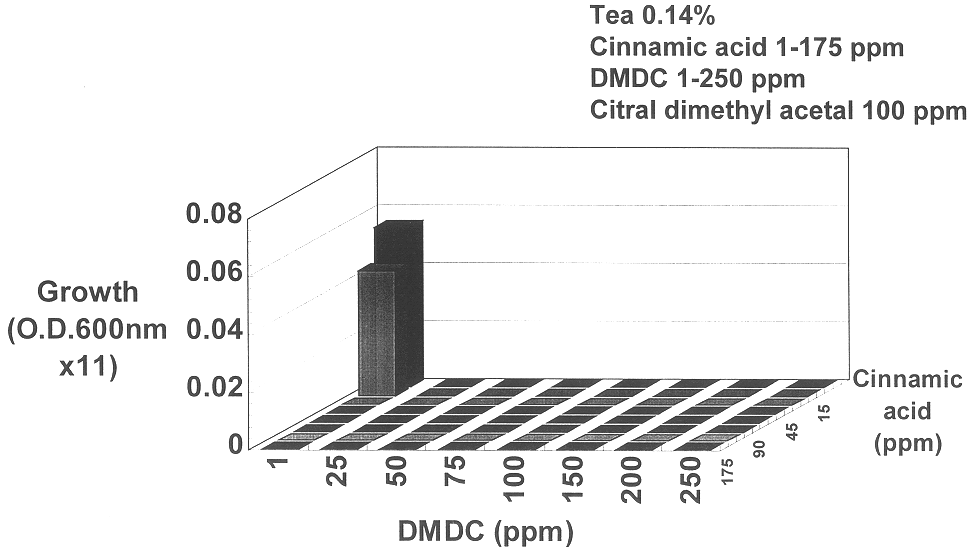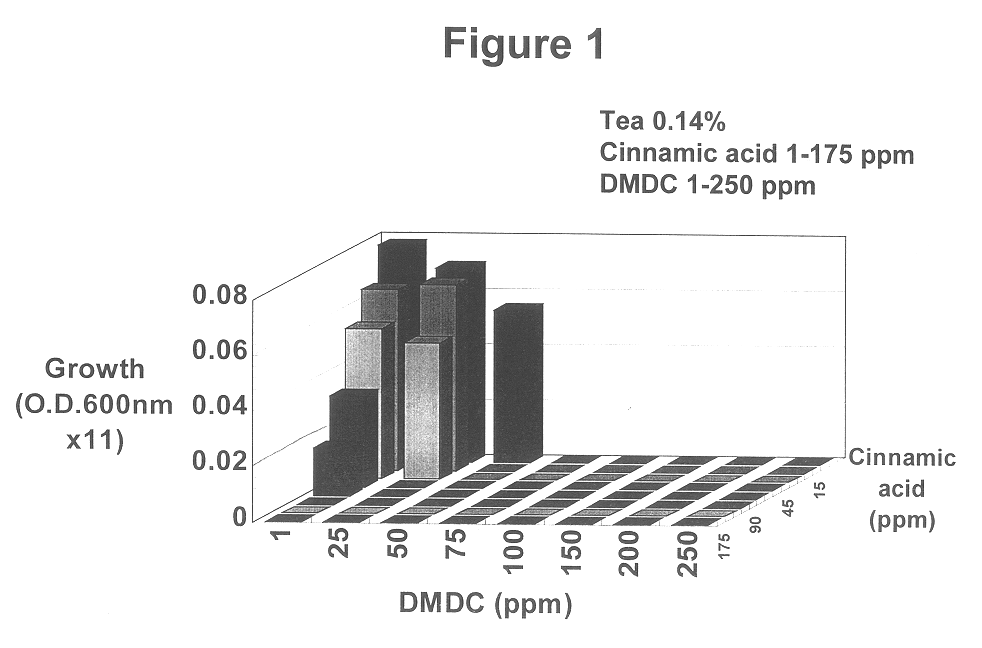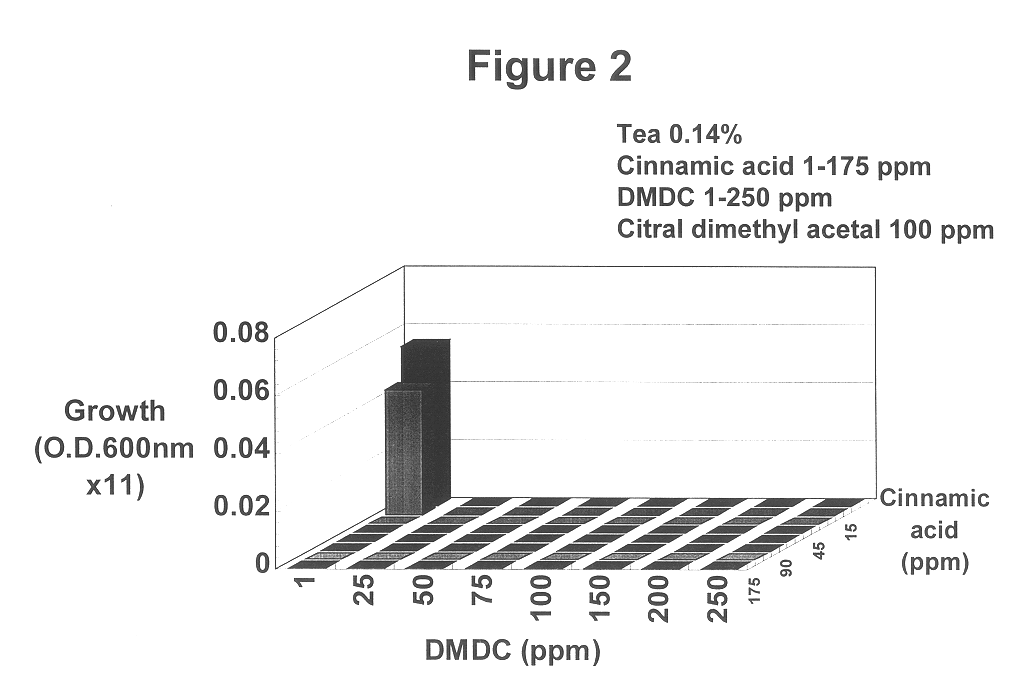Ambient stable beverage and process of making
a stable beverage and stable technology, applied in the field of ambient stable beverage and process of making, can solve the problems of affecting the flavour of a tea based beverage, affecting the taste of the beverage, and consuming a lot of resources, so as to reduce the amount of oxygen, reduce the amount of waste, and suppress unwanted preservatives.
- Summary
- Abstract
- Description
- Claims
- Application Information
AI Technical Summary
Benefits of technology
Problems solved by technology
Method used
Image
Examples
example 2
Synthetic Soft Drink Experiments
FIG. 11 gives the results of a control experiment of growth of yeast Saccharomyces cerevisiae X2180-1B in a matrix of tubes of synthetic soft drink, 0% tea. Synthetic soft drink contained glucose, 8%w / v, citric acid 3 g / l, potassium orthophosphate 1 g / l, magnesium chloride 0.1 g / g and yeast extract 0.1 g / l. The matrix of 30 ml tubes each contained 10 ml soft drink, pH 3.4, containing 1-175 ppm cinnamic acid. Tubes were inoculated with 10.sup.4 cells of the yeast Saccharomyces cerevisiae X2180-1B. Immediately following inoculation, dimethyl dicarbonate, DMDC was added at concentrations ranging from 1-250 ppm. Tubes were then incubated for 14 days at 25.degree. C. to allow surviving yeasts to grow out. At 14 days growth was measured by optical density at 600 nm in x11 diluted samples, and blank values subtracted.
FIG. 12 shows the combined effect of citral dimethyl acetal, cinnamic acid and DMDC on growth of yeast Saccharomyces cerevisiae X2180-1B in a m...
example 3
Effective Concentrations of Essential Oils
FIG. 21 shows the effective concentrations of trans,trans-2,4-decadienal. Growth of yeast Saccharomyces cerevisiae X2180-1B in 30 ml bottles containing RTD tea, 0.14% tea containing 0, 15 ppm or 30 ppm of cinnamic acid. Rows of tubes also contained trans,trans-2,4-decadienal at concentrations ranging between 0-16 ppm. After inoculation at 10.sup.4 cells of yeast, tubes were then incubated for 14 days at 25.degree. C. to allow surviving yeasts to grow out. At 14 days growth was measured by optical density at 600 nm in x11 diluted samples, and blank values subtracted.
FIG. 22 shows the effective concentrations of citral. Growth of yeast Saccharomyces cerevisiae X2180-1B in 30 ml bottles containing RTD tea, 0.14% tea containing 0, 15 ppm or 30 ppm of cinnamic acid. Rows of tubes also contained citral at concentrations ranging between 0-120 ppm. After inoculation at 10.sup.4 cells of yeast, tubes were then incubated for 14 days at 25.degree. C. t...
PUM
 Login to View More
Login to View More Abstract
Description
Claims
Application Information
 Login to View More
Login to View More - R&D
- Intellectual Property
- Life Sciences
- Materials
- Tech Scout
- Unparalleled Data Quality
- Higher Quality Content
- 60% Fewer Hallucinations
Browse by: Latest US Patents, China's latest patents, Technical Efficacy Thesaurus, Application Domain, Technology Topic, Popular Technical Reports.
© 2025 PatSnap. All rights reserved.Legal|Privacy policy|Modern Slavery Act Transparency Statement|Sitemap|About US| Contact US: help@patsnap.com



